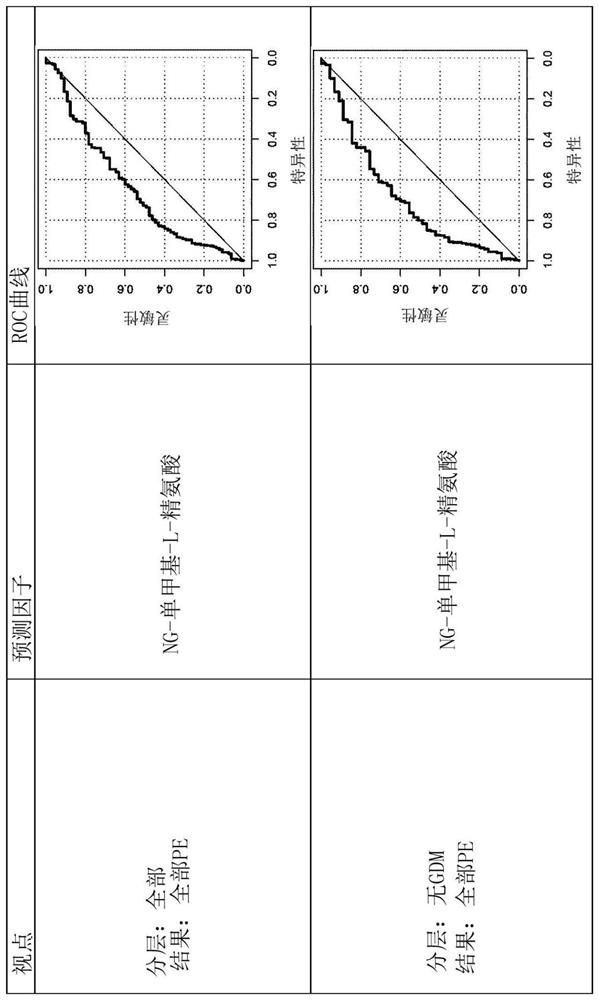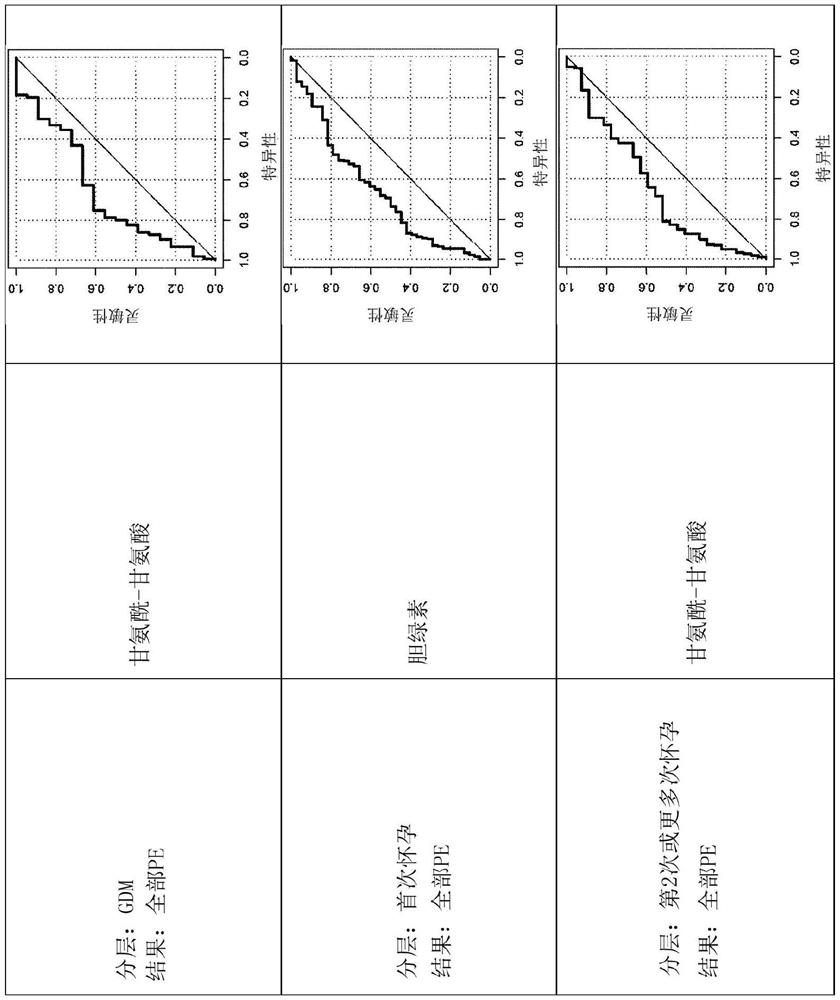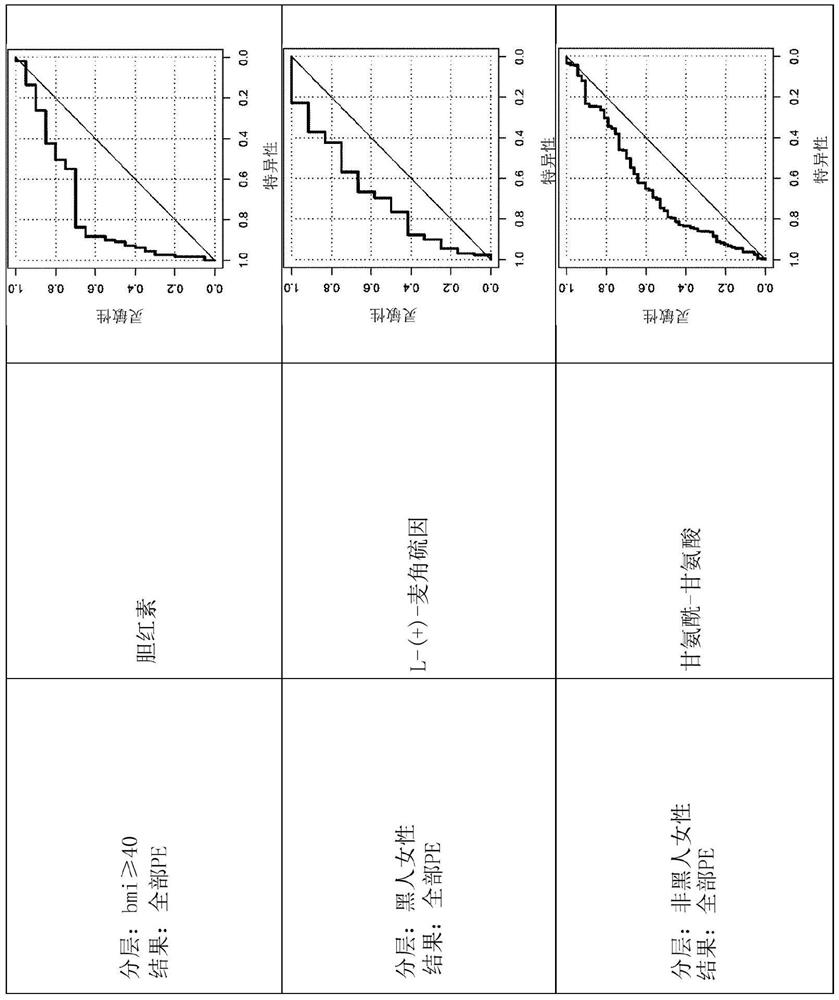Detection of risk of pre-eclampsia in obese pregnant women
A pre-eclampsia and obesity technology, applied in the field of assessing the risk of pre-eclampsia in early pregnancy in obese pregnant women, can solve problems such as reducing the incidence rate
- Summary
- Abstract
- Description
- Claims
- Application Information
AI Technical Summary
Problems solved by technology
Method used
Image
Examples
Embodiment 1
[0253] Example 1 - Method
[0254] Participants and Samples
[0255] Prospective clinical samples were collected from women with singleton pregnancies at first visit (15+0 weeks to 18+6 weeks' gestation) who were diagnosed with preeclampsia (cases) or not (controls) in late pregnancy Group). All samples were from participants in the UPBEAT (UK Better Diet and Exercise Trial) nulliparous maternal prospective screening study 50 .
[0256] Written consent was obtained from each participant. The inclusion criteria for this study were BMI ≥ 30kg / m 2 And women with singleton pregnancy from 15+0 weeks to 18+6 weeks. Applicable exclusion criteria are: inability or unwillingness to sign informed consent; pregnancy 18+6 weeks; essential hypertension requiring treatment before or during pregnancy; pre-existing renal disease; systemic Lupus erythematosus; antiphospholipid syndrome; sickle cell anemia; thalassemia; celiac disease; thyroid disease; psychosis; multiple pregnancy; cur...
Embodiment 2
[0420] Example 2 - Univariate Analysis of Results
[0421] single predictor selection
[0422] This was taken into account in the univariate analyses, given that the applicants believe that prediction of preeclampsia in obese pregnant women may require different predictors and combinations thereof depending on specific patient populations and / or disease subtypes. First, the applicants investigated variables, more specifically metabolite variables, that were advantageous in predicting preeclampsia in all obese pregnant women. Applicants then worked to identify predictors specific to any of the strata previously defined. To identify predictors that are truly subgroup-specific, as well as predictors that may have been missed by treating the obese pregnant population as a homogenous group, their predictive performance was compared with that of their predictive performance for PE in the total obese population (stratification: total) Compare. They were considered subgroup speci...
Embodiment 3
[0448] Example 3 - Results Multivariate Analysis
[0449] The notion of creating a model space of predictive models containing all possible 2 to 4 predictors, and then exploring that model space using the rigorous statistical criteria explained earlier, enables the discovery of a strong potential for synergistic predictors, i.e., combinations of these predictors that are significantly Improved predictive performance of any constituting parent model. For example, based on the criteria explained earlier, a predictive model ABC consisting of predictors A, B, and C is considered an improved model only if the predictive performance of the ABC model is significantly better than any of the models AB, BC, and AC.
[0450] Again, applicants applied multiple viewpoints in addition to predicting PE in all obese women. Applicants have done this to ensure that the subsequently selected predictors, and the combination of predictors within that selection, will predict PE in patients with ...
PUM
 Login to View More
Login to View More Abstract
Description
Claims
Application Information
 Login to View More
Login to View More - R&D Engineer
- R&D Manager
- IP Professional
- Industry Leading Data Capabilities
- Powerful AI technology
- Patent DNA Extraction
Browse by: Latest US Patents, China's latest patents, Technical Efficacy Thesaurus, Application Domain, Technology Topic, Popular Technical Reports.
© 2024 PatSnap. All rights reserved.Legal|Privacy policy|Modern Slavery Act Transparency Statement|Sitemap|About US| Contact US: help@patsnap.com










